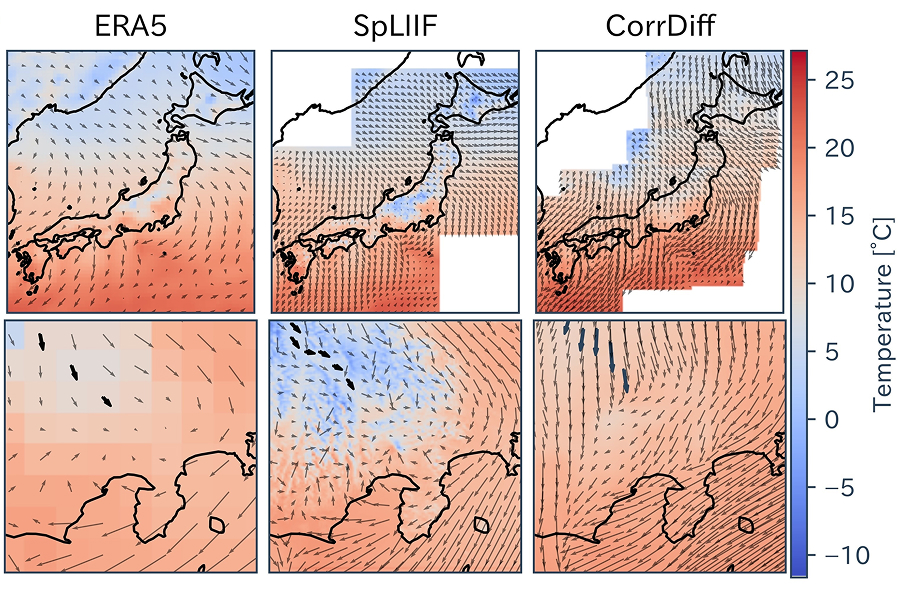
The research paper, authored by Machine Learning Engineers Yago del Valle Inclan, Enrique Arriage, Dmitry Lyamzin, alongside Head of Research, Pablo Cervantes, and CEO Tiago Ramalho, presents the Sparse Local Implict Function (SpLIIF), a new machine learning model designed to overcome technical challenges in high-resolution weather forecasting.
The research findings are set to be shared at the Tackling Climate Change with Machine Learning workshop, affiliated with the international conference on AI, NeurIPS 2025 scheduled to be held from December 2nd to 7th in San Diego, California.
NeurIPS is recognized globally as one of the highest-caliber international conferences in the fields of machine learning and neuroscience. Papers presented at this conference are expected to reflect major technological advancements in the AI domain, serving as academic benchmarks and forming the foundation for industrial applications.
The paper, available on arXiv, titled "Sparse Local Implicit Image Function for sub-km Weather Downscaling" focuses on a technology crucial for climate change mitigation and reliable disaster prediction—the generation of hyper-local, sub-kilometer-scale weather data.
Conventional weather data has been categorized into two main types: low-resolution model data covering wide geographic areas, and highly accurate but sparsely located ground observation data. The process of estimating high-resolution weather information at arbitrary points to bridge this gap is known as downscaling.
Researchers developed SpLIIF, a novel machine learning architecture. It fundamentally shifts from traditional grid-based processing by using implicit neural representations to model weather as a continuous function. This shift is the key to its performance, allowing SpLIIF to generate downscaled, high-resolution, and highly accurate weather maps for virtually any location, even with limited observational data. Furthermore, the model is uniquely capable of accounting for the influence of complex topographical features, which ensures superior local forecasting precision.
Performance evaluation of SpLIIF demonstrated an exceptional accuracy improvement of up to 50% in temperature downscaling when compared to existing baselines and other state-of-the-art AI models.
Achieving this high-precision local forecasting technology directly contributes to solving urgent real-world problems. Local forecasts for temperature and wind speed are expected to significantly improve the quality of decision-making in the following critical sectors:
Moving forward, this technology has the potential to directly optimize critical social infrastructure, spanning energy, agriculture, and disaster management. Recursive aims to apply its advanced AI technology to deliver actionable solutions for climate change and further global climate resilience.
[Paper Details]
Title: Sparse Local Implicit Image Function for sub-km Weather Downscaling
Available at: https://arxiv.org/abs/2510.20228
Workshop: NeurIPS 2025 Workshop: Tackling Climate Change with Machine Learning
Authors:
Founded by a former senior research engineer at Google DeepMind, Recursive brings together world-class talent from across disciplines to engineer results where others can't.





